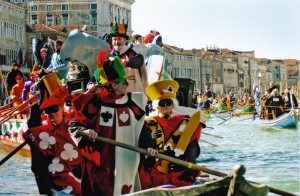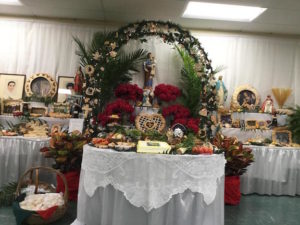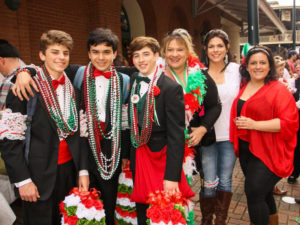Lent in Italy – Corajisima, A Calabrian Tradition
This article is from Calabria: The Other Italy. Check out this website to see additional information and pictures:
If you happen to be celebrating Easter in Calabria and you arrive a little early, you may just come across what looks like a ragdoll hanging from a balcony or the side of a house. Not to panic, this is not some form of malocchio or evil eye, but Corajisima, a traditional practice during Lent in Italy, specifically, Calabria and other areas of the south.

WHAT IS CORAJISIMA?
Corajisima is more a who than a what. She is the wife or perhaps more accurately said, the widow, of Carnevale. She can also be called the sorella or sister of Carnevale. After the great feast of Martedì Grasso or Fat Tuesday, Carnevale, the embodiment of the revelries, dies. Poor Corajisima remains alone. Usually depicted as an ugly, skinny old woman with a decidedly unsettling appearance, she represents abstinence in the Lenten period.








 As a greeting for a Merry Christmas or Happy New Year, here is the delightful story of the famous panettone. Once upon a time there was a bread-maker named Toni. One fine day, Toni fell madly in love with a certain peasant girl named Lucia. Lucia went to town every morning to sell eggs. Toni, every morning, awaited Lucia’s arrival with longing and enthusiasm, and then, when he saw her, so strong were the feelings that he felt for this young country girl that he never knew what to say and he remained dumbstruck. So many loving glances exchanged, so many sighs, and so many broken eggs, just because this poor devil was unable to express his love. Finally, Toni had a brilliant idea: he decided to prepare a dessert for his adored Lucia, not just any dessert, but a special dessert never made before!
As a greeting for a Merry Christmas or Happy New Year, here is the delightful story of the famous panettone. Once upon a time there was a bread-maker named Toni. One fine day, Toni fell madly in love with a certain peasant girl named Lucia. Lucia went to town every morning to sell eggs. Toni, every morning, awaited Lucia’s arrival with longing and enthusiasm, and then, when he saw her, so strong were the feelings that he felt for this young country girl that he never knew what to say and he remained dumbstruck. So many loving glances exchanged, so many sighs, and so many broken eggs, just because this poor devil was unable to express his love. Finally, Toni had a brilliant idea: he decided to prepare a dessert for his adored Lucia, not just any dessert, but a special dessert never made before! The tradition of the seven fishes prepared for meals on Christmas Eve lends itself to a Central and Southern Italian tradition and is not prevalent in the Northern region. Some argue that this may be due to Southerners being a bit more superstitious than their Northern counterparts. Of course, you don’t have to look too far for an explanation of why fish is an obvious choice on Christmas Eve: Catholic rules prohibit the consumption of meat on Christmas Eve.
The tradition of the seven fishes prepared for meals on Christmas Eve lends itself to a Central and Southern Italian tradition and is not prevalent in the Northern region. Some argue that this may be due to Southerners being a bit more superstitious than their Northern counterparts. Of course, you don’t have to look too far for an explanation of why fish is an obvious choice on Christmas Eve: Catholic rules prohibit the consumption of meat on Christmas Eve.